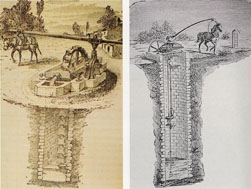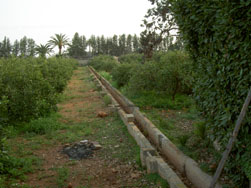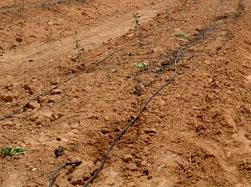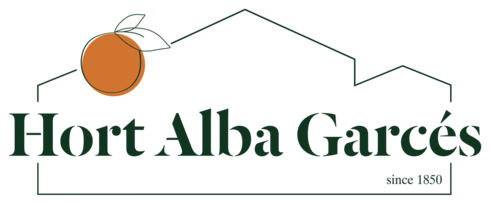Irrigation
The first motor-pumped wells were steam-driven. This called for the installation of a chimney and a small hut to house the motor. After 1910, “poor gas” motors started began to be used, fuelled by benzene and heavy oils, although by the 1920s these were replaced by other fuels, such as anthracite, charcoal, firewood, etc. A decade later the most popular type of motor was electrically powered, requiring renovation works to be carried out on the old wells.

The water was stored in the pool to be used for irrigating the oranges. It was channelled from the pool to the various plots along irrigation ditches, which were used to irrigate two plots at the same time.
Although these irrigation networks are no longer in use in the Picanya orange groves since drip-irrigation systems were installed, the irrigation ditches remain as evidence of the land’s relatively recent past.

We currently use drip-irrigation systems because they save water and homogenise the yield, quality and flavour of the oranges obtained from all the trees, regardless of their location.
We now also have an anti-freeze system in place so that our oranges do not suffer if the temperature drops below freezing point (something that happens rarely, but if it did happen, while others would have their entire crop spoiled, we would be unaffected).

